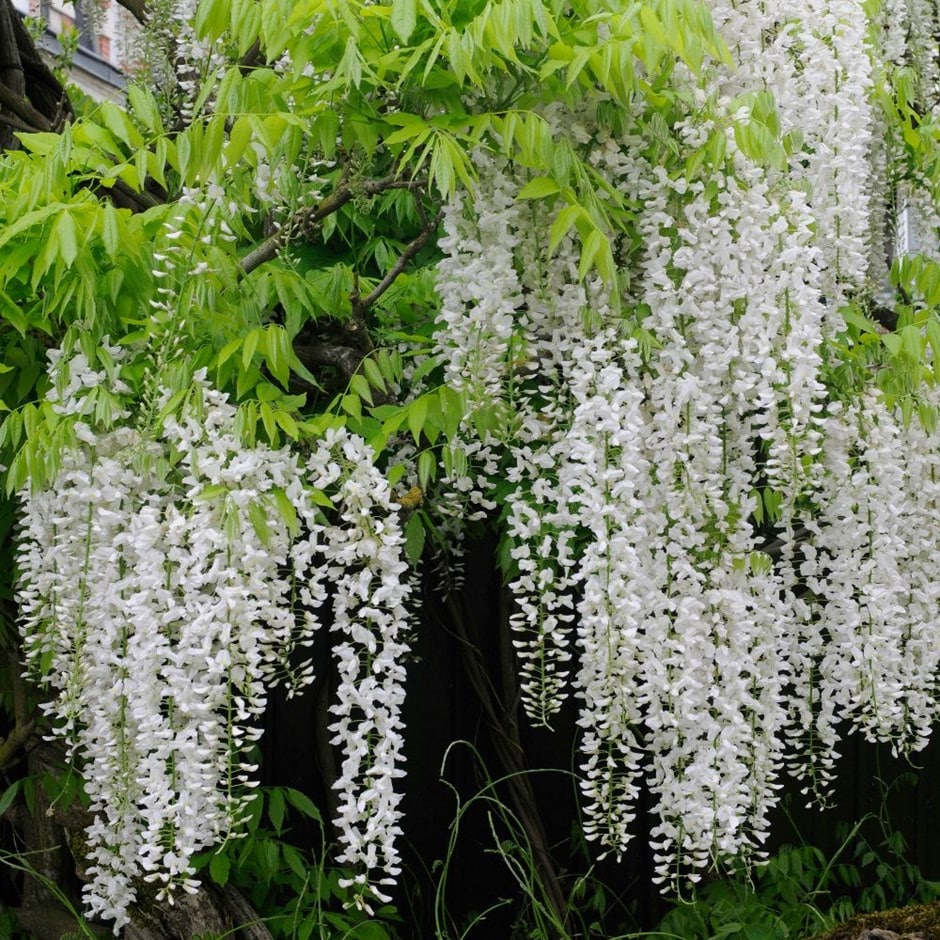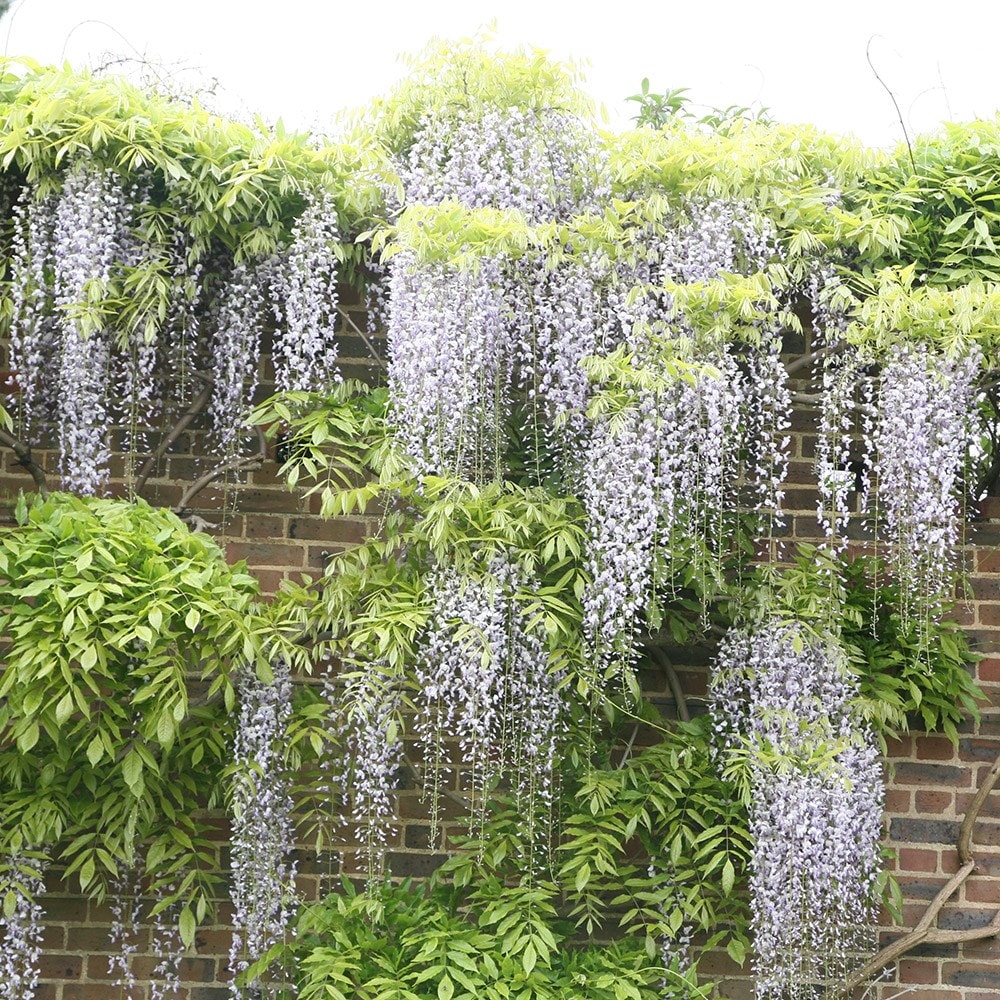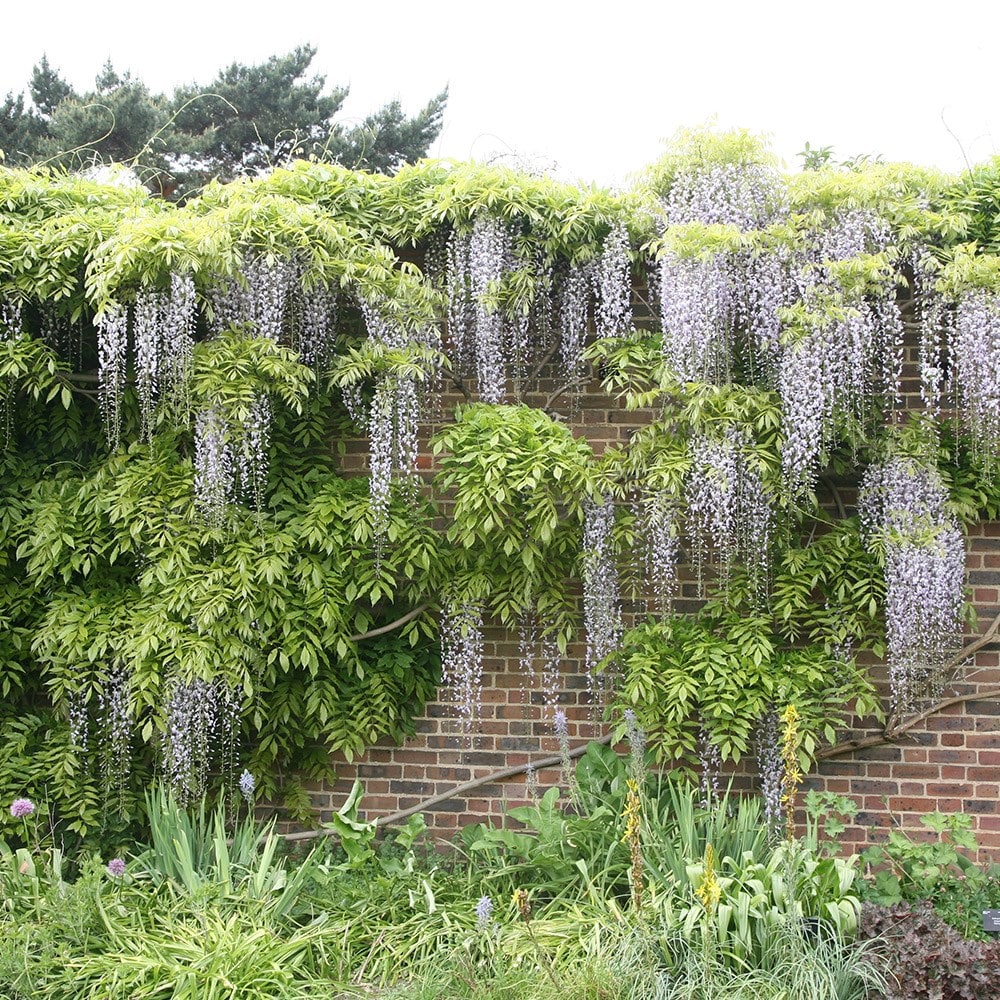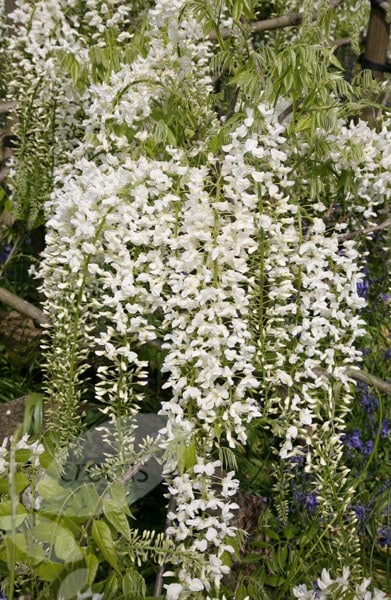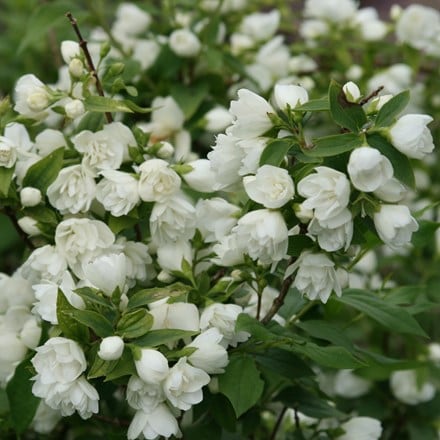Wisteria floribunda f. alba 'Shiro-noda'
white Japanese wisteria ( syn. Wisteria floribunda Alba / Longissima Alba)
Eventual height & spread
Wisteria floribunda f. alba 'Shiro-noda'
white Japanese wisteria ( syn. Wisteria floribunda Alba / Longissima Alba)
- 3 litre pot | 60cm cane | grafted
- £30.39 £37.99
- In stock (shipped within 3-5 working days)
- 5 litre pot | 1.5m cane | grafted
- £103.99 £129.99
- available to order from late spring
- 7 litre pot | 1.5m cane | grafted
- £111.99 £139.99
- available to order from late spring
Delivery options
- Standard £5.95
- Position: full sun or light, dappled shade
- Soil: fertile, moist, well-drained soil
- Rate of growth: fast-growing
- Flowering period: June
- Hardiness: fully hardy
This elegant white Japanese wisteria produces extravagant clusters up to 60cm (24in) long of fragrant, pea-like, white flowers in June and light green leaflets, turning yellow in autumn. Less vigorous than many other varieties it's ideal for training against a sunny house wall.
This plant has been vegetatively propagated, so will flower earlier than those grown from seed. - Garden care: To get lots of flowers, the twining stems need pruning twice a year - once in summer (about two months after the flowering has finished) and again in mid-winter. To train your wisteria against a wall, the wall will first need a network of stout horizontal wires, attached at approximately 30cm intervals. After planting, prune the leading shoot of your wisteria back to approximately 90cm above ground level and remove any side branches as this will encourage a strong new leader to form. In the summer of the first growing season, tie the leader in vertically and choose two new lateral shoots on either side of the leader. Tie these onto the wires at a 45 degree angle. Any smaller shoots coming from these lateral branches should be cut back to two or three buds. In the first winter, cut back the leader to a bud approximately 75cm above the highest lateral branch. Gently untie the lateral branches and prune them back by about a third, then re-tie them onto a wire so they are nearly horizontal. In subsequent summers (and until the plant has filled the allotted space), tie in the leader as it grows and choose two strong laterals to form the next tier. These should then be tied in at a 45 degree angle and as in the previous year, any smaller shoots coming from these should be cut back to two or three buds. In subsequent winters cut back the leading shoot as before and cut back and re-tie the new laterals to a near-horizontal position. The older laterals can be cut back by about a third of their total length. Once the plant has become established and reached the desired height, keep tying in the lateral stems as they spread out. In summer, cut back the wispy stems on both the laterals and sub-laterals (the side shoots from the laterals) to about five or six buds from the main branches. In winter, cut back these stems even harder to within two or three buds of the main branches. These form the short spurs that will go on to produce flowers in the following spring.
- Humans/Pets: Harmful if eaten
Goes well with
Clematis montana var. grandiflora
3 litre pot | 60cm cane
£15.99
In stock (shipped within 3-5 working days)
Philadelphus Manteau d'Hermine
2 litre pot
Offer was £24.99
£18.39
In stock (shipped within 3-5 working days)
